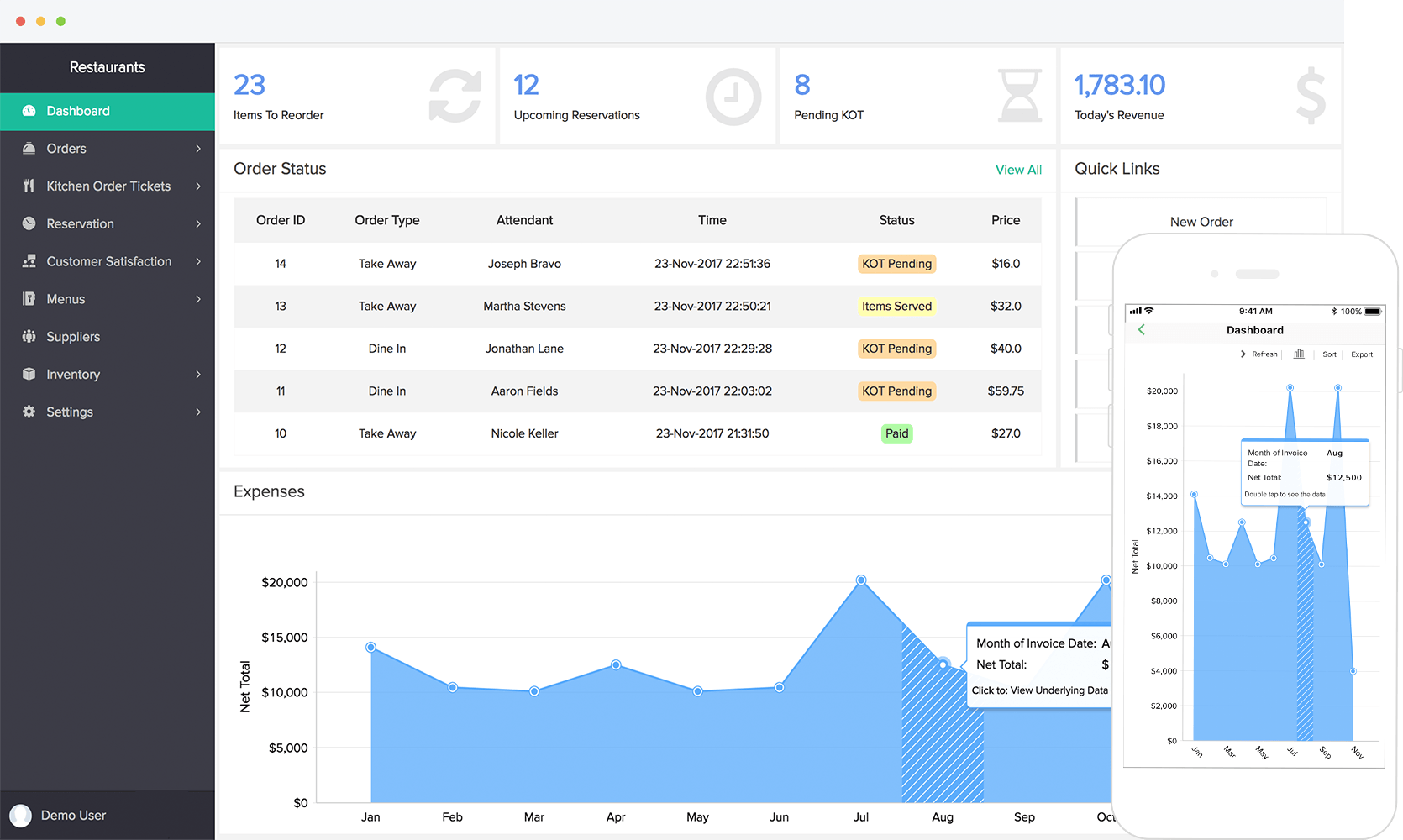How the Food Industry Uses Analytics
The food industry is a highly competitive one with over a million restaurants in the United States alone. Because of this there is a huge emphasis on innovation and adaptation. The biggest adaptation has to be turning to food eCommerce, especially as countries go in and out of quarantine.
Since word of mouth doesn't exactly work as well online, that's where data science and analytics come to the rescue. The average customer has certain needs that need to be met in order to have a positive experience in a restaurant or when ordering online.
Things like on-time delivery and guaranteeing fresh produce is ethically harvested are important management goals. Here we will explore some of the ways Big Data and the uses of analytics can help food industry managers excel.
| #1 Ranking: Read how InetSoft was rated #1 for user adoption in G2's user survey-based index | Read More |
Maintain Quality Control Standards
Analytics and Big data are incredibly important when it comes to your food quality control. When you have products that are temperature-sensitive like milk, fruit, and more obviously ice cream you have to have a perfect environment to transport and store them so they don't get damaged.
The procedures are varied depending on the product, the shelf life of bananas, and that of wine are a good example. Using analytics you can know exactly the time you have to replace a product or take any preemptive measures so that the waste is greatly reduced. Doing so will both save you time and money, not to mention the protection your brand will have against any negative responses from customers which can have a huge impact.
Efficient Food Deliveries
Food delivery is incredibly important especially now, and companies like GrubHub have made the process simpler and easier even if your place didn't actually specialize in food delivery in the first place. So by using advanced data analytics businesses can better process how they are performing. With that, data delivery estimates are getting more accurate which in turn drives the customer satisfaction rate.
 |
View a 2-minute demonstration of InetSoft's easy, agile, and robust BI software. |
Transparency In Your Supply Chain
People will like to know where their food comes from, the way it was raised or grown, and what its quality is. That's why they want the industry to be much more transparent. When you have advanced data analytics your customers have a more in-depth look as to where their product comes from and how it is cruelty-free.
Ethically grown or raised food is a big issue with customers and can be incorporated into your brand and used for marketing purposes. This transparency also provides your customers with better insight into how your products are affecting the environment and so boosting the confidence in your brand. Transparency can also help with supply and logistics, so you can for example better track contaminated produce and help reduce its spread.
Data Analytics In Marketing
Data analytics is an invaluable tool when it comes to your overall marketing strategy. Simply put if you aren't using it you are missing out not only on your overall reach but on lost revenue. The best thing you can do is identify your customers and where best to reach them (what platform). Then identify when best to market your product, for example just before lunch hour, before breakfast, or a holiday.
Also using analytics, figure out what other factors come into play that affects your customer's buying decisions. Maybe your best, and most frequent customers are rural people in their 80's. Then you can identify which platform they use most to order food from you and you can concentrate your ad campaigns there. That way you will save a lot of money on needles campaigns that target age groups and platforms not relevant to your business.
 |
View live interactive examples in InetSoft's dashboard and visualization gallery. |
In Conclusion
Using analytics for your business is crucial if you want it to thrive and in some cases even survive. With the restaurant business alone consisting of more than $500 billion, the market is huge but so is the competition. The tools at our disposal are vast and varied, we can now track and measure data like never before. And when we process it the right way and present our product to our customers in a way that best suits them we essentially get brand loyalty. And that is the cornerstone of any business operating today.
